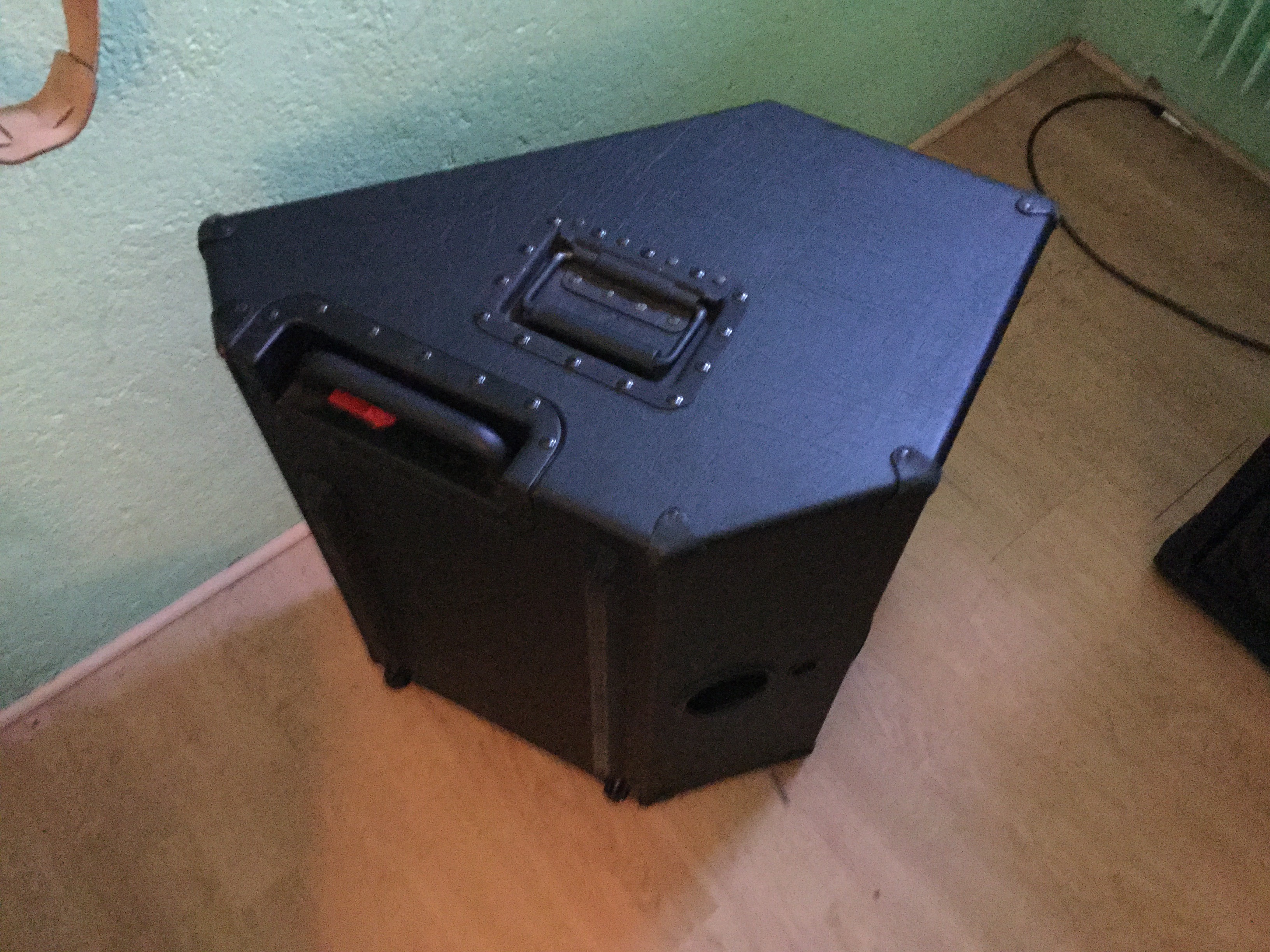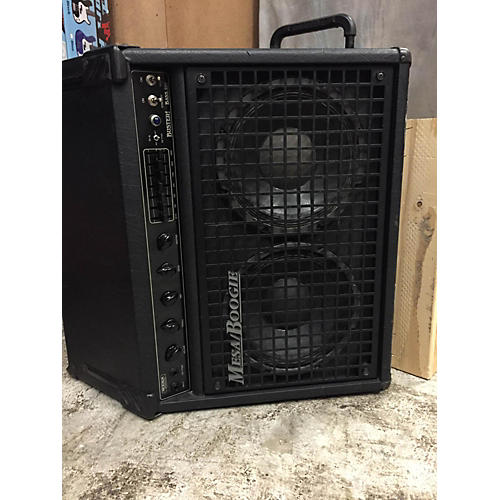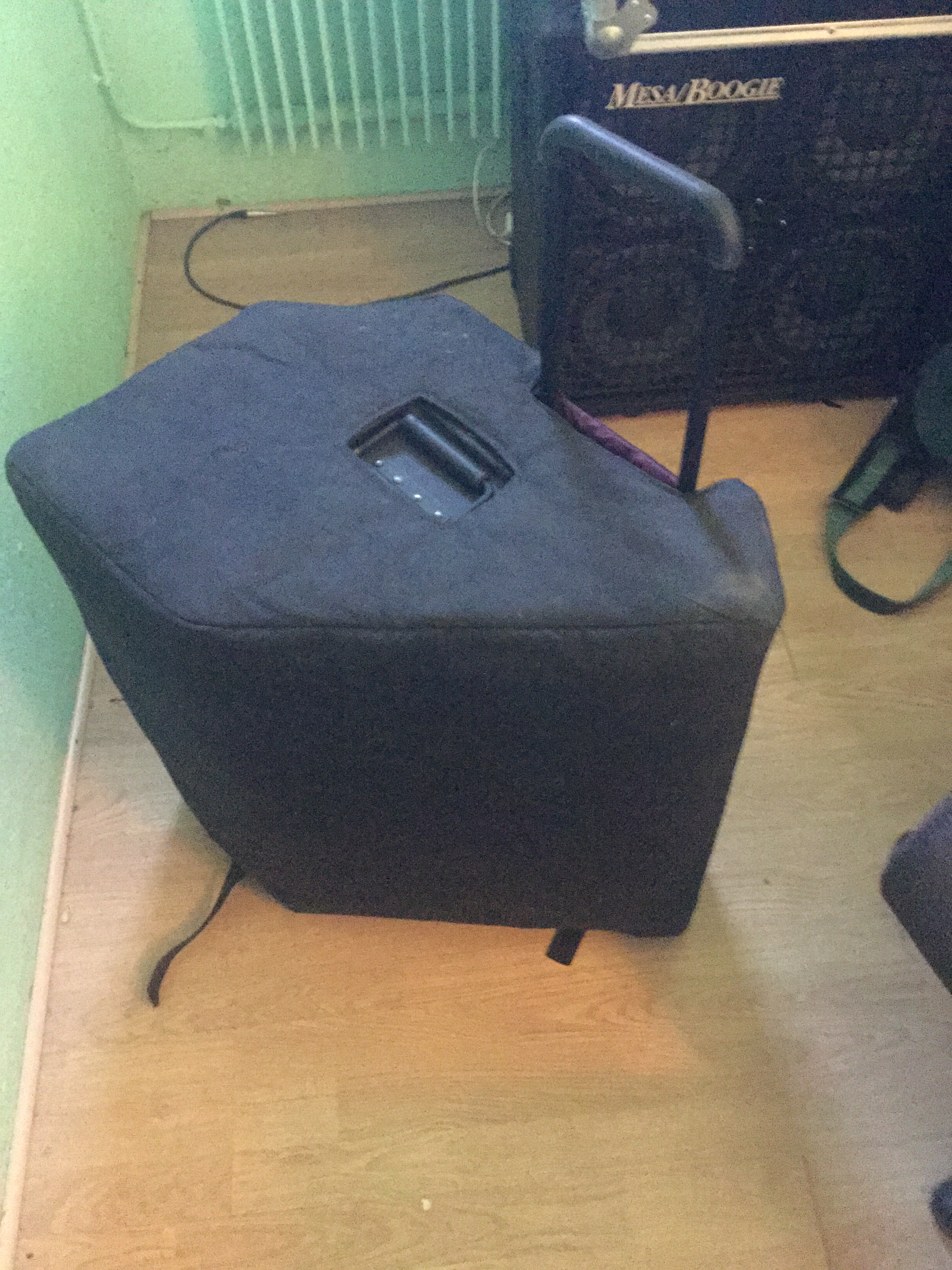Ok, let me start with the Dynacords. I actually have four amps working
a) Dynacord Bassking 1 - like the Eminent 1 but only two inputs. First version with ECC808the input stages.
b) Dynacord Eminent 2 - "twice the Bassking"
Both with modified inputs - impedance increased. Coupling cap in input stage reduced to obtain to limit lower frequency limit to ~70 Hz 1st order.
c) Dynacord Eminent 2T - the widely spread hybrid version of the Eminent.
d) Dynacord G-2000 with DIY preamp. Again, the lower frequency response is limited to 70 Hz 6dB/Octave. This is meant to protect the speaker a bit from too low frequencies.
The cab in the picture at that time still ran the 2515 which i replaced for the 3015. It is tuned more or less like a TL606, i.e. to 56Hz in 90 l - measured by me. When i melted the 3015, the central port was closed, so the tuning was a bit lower. At that time I played the Gibson bass, which btw. has custom pickups, on the bridge pickup (but i do use the neck pickup quite a lot).
And yes, the red thing in the center of the speaker is a "beam blocker" - actually a hemisphere acting as a diffractor and set as close to the dust cap as possible without touching the speaker at maximum excursion.
Addition: the Oberton runs in 83 l at 56 Hz, and the Beta 12 runs in 55 l also at about 55 Hz
EDIT: i forgot to mention something - the preamp was strongly microphonic, especially when the gain pot was fully up. I could track it down to the valve (an EH ECC81).
BTW: the topic of a resonance in the preamp of the G-2000 is also on the table. The tube was using turned out to be strongly microphonic. Which i did not notice at home, at least to that extent - although i played the amp loud (at a time when that was permitted...).
a) Dynacord Bassking 1 - like the Eminent 1 but only two inputs. First version with ECC808the input stages.
b) Dynacord Eminent 2 - "twice the Bassking"
Both with modified inputs - impedance increased. Coupling cap in input stage reduced to obtain to limit lower frequency limit to ~70 Hz 1st order.
c) Dynacord Eminent 2T - the widely spread hybrid version of the Eminent.
d) Dynacord G-2000 with DIY preamp. Again, the lower frequency response is limited to 70 Hz 6dB/Octave. This is meant to protect the speaker a bit from too low frequencies.
The cab in the picture at that time still ran the 2515 which i replaced for the 3015. It is tuned more or less like a TL606, i.e. to 56Hz in 90 l - measured by me. When i melted the 3015, the central port was closed, so the tuning was a bit lower. At that time I played the Gibson bass, which btw. has custom pickups, on the bridge pickup (but i do use the neck pickup quite a lot).
And yes, the red thing in the center of the speaker is a "beam blocker" - actually a hemisphere acting as a diffractor and set as close to the dust cap as possible without touching the speaker at maximum excursion.
Addition: the Oberton runs in 83 l at 56 Hz, and the Beta 12 runs in 55 l also at about 55 Hz
EDIT: i forgot to mention something - the preamp was strongly microphonic, especially when the gain pot was fully up. I could track it down to the valve (an EH ECC81).
BTW: the topic of a resonance in the preamp of the G-2000 is also on the table. The tube was using turned out to be strongly microphonic. Which i did not notice at home, at least to that extent - although i played the amp loud (at a time when that was permitted...).








Comment